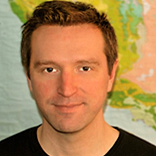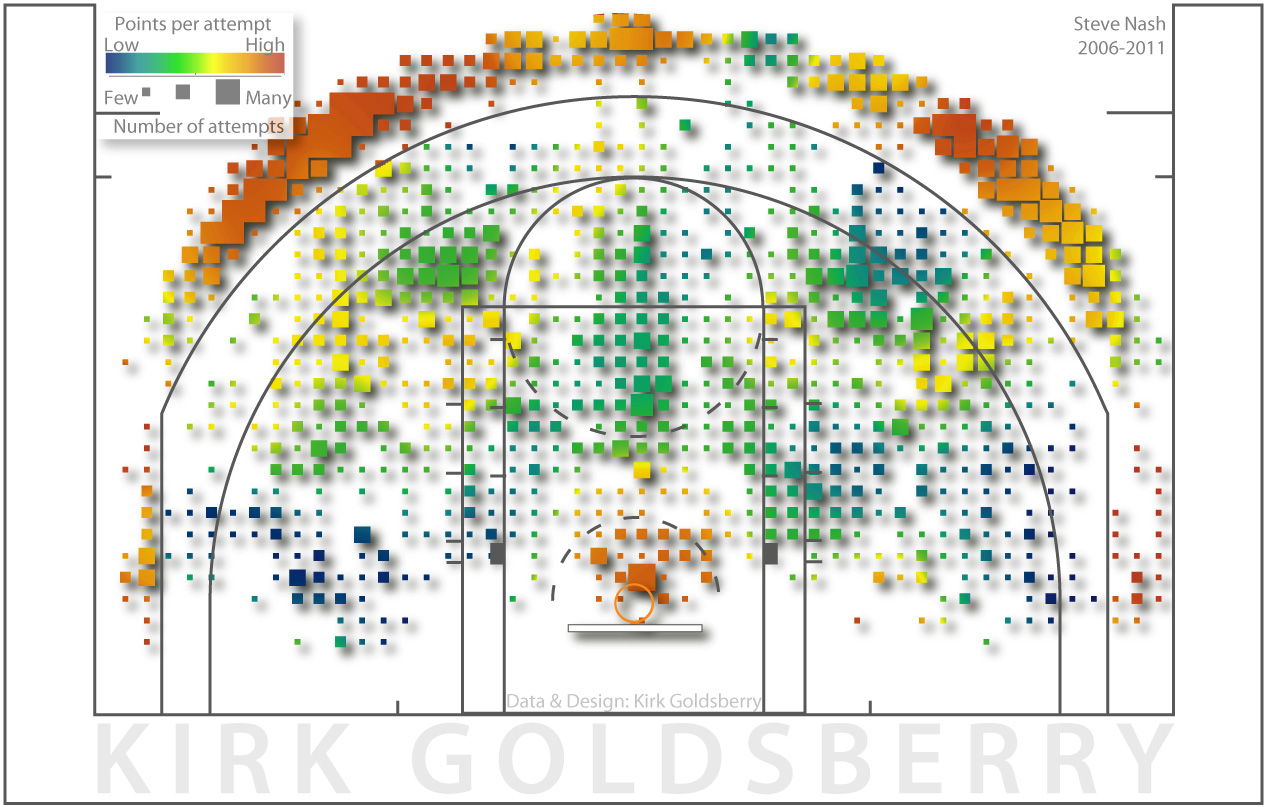Alumnus Kirk Goldsberry (PhD 2007) recently presented a research paper at the 2012 MIT Sloan Sports Analytics Conference in Boston which was one of two finalists for top paper amongst over 100 submissions and was featured in the New York Times blog “Off the Dribble.” The conference goal is to provide a forum for industry professionals (executives and leading researchers) and students to discuss the increasing role of analytics in the sports industry.
According to its abstract, Kirk’s paper, “CourtVision: New Visual and Spatial Analytics for the NBA,” “investigates spatial and visual analytics as means to enhance basketball expertise. We introduce CourtVision, a new ensemble of analytical techniques designed to quantify, visualize, and communicate spatial aspects of NBA performance with unprecedented precision and clarity. We propose a new way to quantify the shooting range of NBA players and present original methods that measure, chart, and reveal differences in NBA players’ shooting abilities. We conduct a case study, which applies these methods to 1) inspect spatially aware shot site performances for every player in the NBA, and 2) to determine which players exhibit the most potent spatial shooting behaviors. We present evidence that Steve Nash and Ray Allen have the best shooting range in the NBA. We conclude by suggesting that visual and spatial analysis represent vital new methodologies for NBA analysts”
“To do this, Goldsberry divided the area from just behind the 3-point line down to the rim into 1,284 ‘shooting cells,’ and looked at how players shot during every N.B.A. game between 2006 and 2011. Not a single player took a shot from every spot on the floor. (Kobe Bryant came the closest, shooting from 1,071 places.) Then, Goldsberry looked at which players averaged more than one point per attempt from the greatest percentage of the places they shot from. By this analysis, Steve Nash and Ray Allen were the best shooters in the league. This seems like a small revelation, but Goldsberry proposed other questions that could be answered through mapping: Where do the most steals occur? Where are the Pacers bad at defending against offensive rebounds? Where does Kevin Garnett tend to commit fouls? There is likely to be a lot more thinking about the geography of the N.B.A. in the years to come. About a third of the league’s arenas have recently installed camera systems that capture and log the position of every player on the court 25 times a second. This has created huge databases of location data that will allow teams to determine how far a player runs in a game, or how many dribbles Kevin Durant generally takes before he shoots. Current and former employees for N.B.A. teams said that the shift toward visual thinking was changing the skills that their analysts needed” (New York Times, Ibid.).
Kirk qualified the results of his study by commenting that “all maps simplify reality – that’s the nature of the geospatial beast. My basketball maps expose the general tendencies and spatial shooting behaviors of NBA players and teams; they are not intended to explain every aspect of basketball reality.” However, “the things Goldsberry, the USC team, and others are looking at — finding ways to measure and visualize stuff that we might think or believe, but not know for sure — can not only help teams make better decisions; they can open the door to a whole new way of seeing the game” (source).
When asked what he’d been up to since leaving UCSB, Kirk commented: “I am a 2007 grad of UCSB Geography’s Ph.D. program where I worked with Keith Clarke, the best advisor ever, Waldo, and Kostas. I also ate about 1,000 chicken burritos at the Arbor. Since then I have been a professor of Geography at Michigan State, where I am still appointed. Since July 2011 I have been a visiting scholar at the Harvard Center for Geographic Analysis. My primary role here is to help integrate spatial reasoning concepts into the Harvard curriculum. I’m doing this in 3 ways: 1) working with faculty to design geographic modules for their courses, 2) designing a new Mapping course for Harvard’s general education curriculum, and 3) launching the new Harvard Geography Colloquium, which invites leading scholars to our campus to demonstrate the value of spatial perspectives in academic research.” “God, I miss Santa Barbara,” Kirk added.







